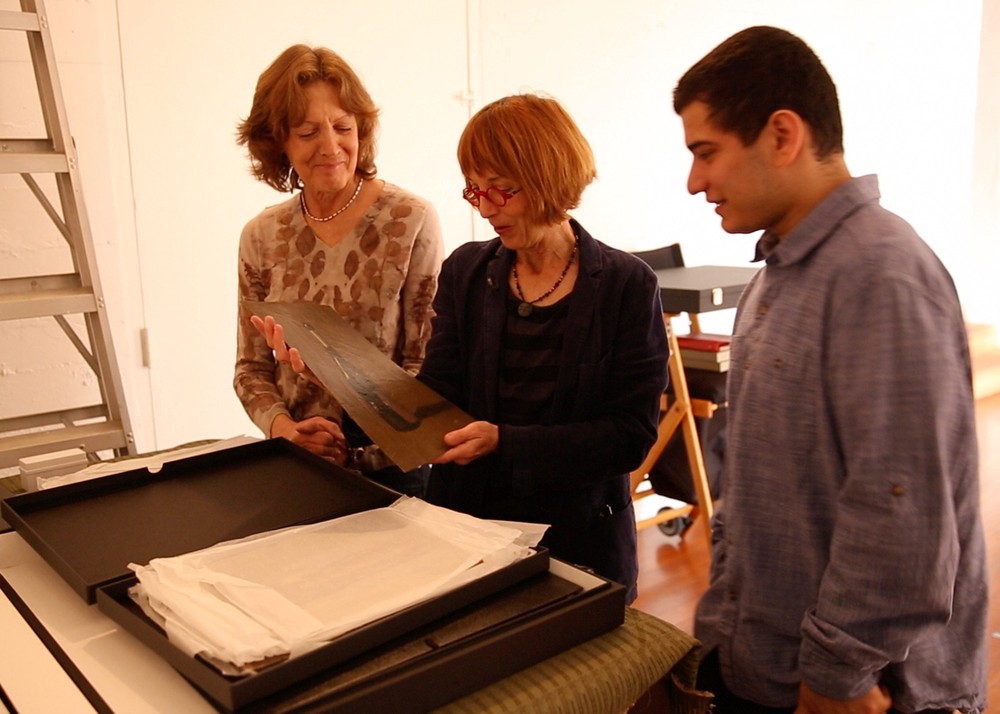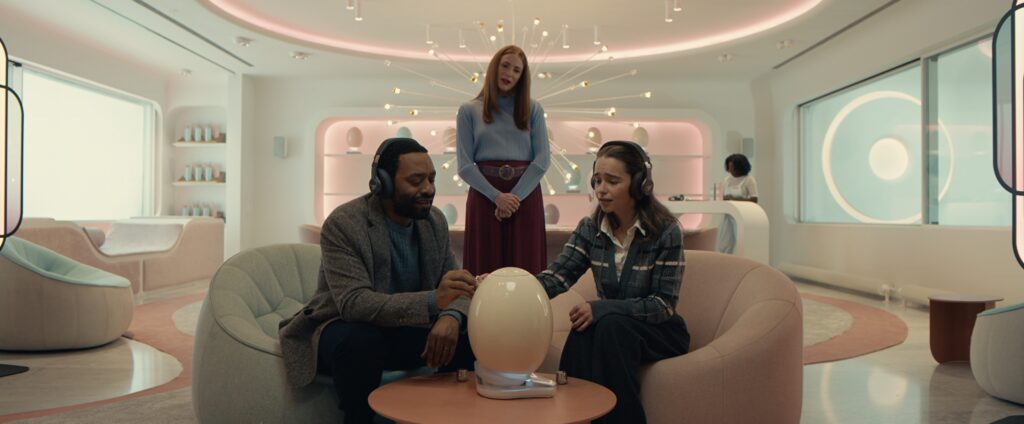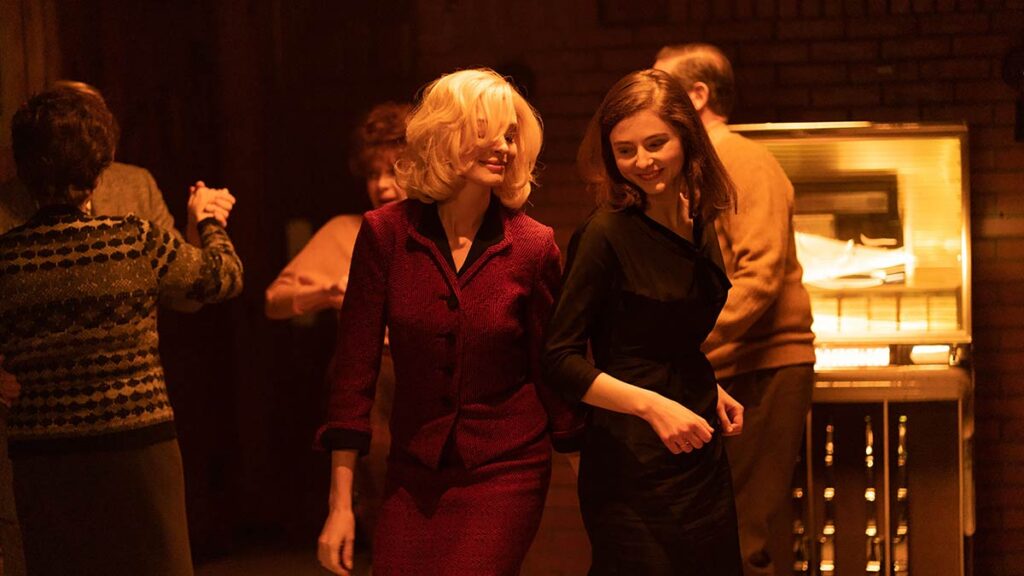Jane Anderson is an award winning playwright, screenwriter and director. As well as being nominated for a Writers Guild of America Award for Best Dramatic Series for her work on the second season of “Mad Men”, she also adapted the critically acclaimed HBO miniseries “Olive Kitteridge” starring Frances McDormand, from Elizabeth Strout’s book of the same name. Women and Hollywood caught up with Anderson to talk about her up and coming feature documentary film “Packed in a Trunk: The Lost Art of Edith Lake Wilkinson”, which focuses on Edith Wilkinson (Anderson’s great aunt), an early 20th century artist who was committed to an asylum following suspicions of her sexuality and never released. Her invaluable artwork remained hidden for years, until it was eventually discovered by Anderson and her mother.
If you have any information regarding Edith’s life or work (since they are still discovering things), you can contact the filmmakers through the film’s website.
“Packed In a Trunk: The Lost Art of Edith Lake Wilkinson” will debut on July 20, 2015, on HBO. (This interview has been edited. It was transcribed by Laura Nicholson.)
W&H: The film is so sad at times, because it’s essentially about how women are so easily erased from history. Tell us why it was so important for you to resurrect Edith and talk a little bit about this erasure of female artistry and history.
JA: Michelle Boyaner (the director) had the vision of how to structure it. The reason I approached her was not because I wanted to make a documentary film, but because I knew that this would be a tool for getting Edith back out there — to make her part of our history. Edith has been haunting me my whole life and it hasn’t been a burden and it was never spooky. I’m a very pragmatic soul — I’m part of the business and I’m a bit of a cynic when it comes to being an over-believer in spiritual or in paranormal matters, however I’ve always felt her tapping at my shoulder.
As you saw in the film, when I was a young woman in New York I was essentially following in her footsteps. I’ve traveled to places like Africa and Bali, and gone down the Amazon — I’ve been to all these exotic locations with my notebooks, and I always felt that Edith was with me, if not guiding my hand. I wasn’t obsessed with her my whole life, I was just aware that there was someone who could’ve been me — if I were born in that time, as a gay woman, as financially naive as I am now, this could’ve happened to me. So really it’s by the grace of God that I’m not an Edith. I felt a moral responsibility to get her story told.
W&H: As part of your journey, did you learn about how women are erased from history?
JA: We already know that. It wasn’t something I had to learn. It wasn’t something that we were deliberately thinking about. The focus was really on Edith. Women do get the short end, but there are many obscure male artists who are forgotten as well.
During this time, being a single woman, you were called a spinster. If there wasn’t the presence of a male- either a big brother or a husband to look after you- it was very easy to be victimized. I’m more interested in how far we’ve come as women, in that we can be financially independent — you couldn’t do that back then.
W&H: There is also the recent film “Finding Vivian Maier” (directed by John Maloof and Charlie Siskel), which has a similar feel to this one in that they both focus on the discovery of amazing works of art that were hidden.
JA: Yes. We all watched that film with great envy. I remember that fabulous overhead shot at the beginning that captures all of her possessions laid out — the hundreds of film canisters, tape recordings of her voice, her clothing and her journals. We had one single picture of Edith. During the course of filming, after searching and having people help us, we ended up with half a dozen pictures, which was remarkable, but we had so little physical or historical evidence to go on — that’s why Michelle [Boyaner] insisted that my character be the focus of the film. I resisted at first because I didn’t want the film to be about me and I really didn’t want to be in front of the camera: I’m a behind-the-camera kind of gal. However, I got used to it and I knew that it was the right narrative choice.
We couldn’t do a Ken Burns piece about Edith because we didn’t have much — also, if we had used the Ken Burns effect with this film, it would end up as a very sad story. We weren’t interested in a tragic story. My journey was to get her back to Provincetown and to watch people embrace her, and it gave the film a glorious end. The fact that I had a camera crew at my elbow, opened doors in Provincetown. When I was a shmucky kid from New York back in the 1970s with my slide, there was no reason for anybody to pay attention to me, but when you walk into town with a camera crew, you have a certain amount of gravitas and authority. So we used a 21st century digital tool to help an early 20th century artist, which I found really satisfying.
W&H: Was it always going to be a HBO film, or did that decision come later?
JA: That came later. We financed it on our own, and through Kickstarter. It was strictly a labor of love. Sheila Nevins (President of HBO Documentary Films) loved the piece and they have embraced it ever since.
W&H: How many pieces of artwork were discovered in the trunk?
JA: A couple of hundred pieces. There were two trunks. My mom told me that a bunch were given away at a church rummage sale, so Edith’s paintings floating around somewhere — I almost died when I heard that. We’re hoping that when the piece airs on HBO, we’ll get contacted by people who have them.
W&H: In certain respects, Edith’s story is also the story of a gay woman who was persecuted because of her sexuality. Given the recent Supreme Court ruling to legalize gay marriage throughout the US and the fact that both you and your film crew are gay women, what does it mean to have Edith’s story told?
JA: We showed the film at the Provincetown International Film Festival, and we thought “This is it. This is the ultimate screening.” I was channeling Edith, and I felt her. We then headed to the Frameline LGBT Film Festival in San Francisco, and although we were looking forward to it, we didn’t know whether it would be of a bit of let down. But then the ruling came down and we were in the city on Friday for the festival, and it was an astoundingly joyful and important experience to be on the street celebrating with everybody.
I knelt on the sidewalk and made a big sign that said “Never in our wildest dreams”, and held it up. Other older gay people came up to me and said, “You’re right. Never in our wildest dreams.” I thought about Edith, who lived in a time when the word lesbian was unthinkable: there was the “Boston Marriage”, which is how society referred to gay women, and it was assumed that these relationships were sexless. When we showed the film, the emotional volume of the audience was so high and the reaction to the film was even stronger than it was in Provincetown, because everyone was so keenly aware of how far we’ve come. Edith’s life would have been very different if she’d lived in this time.
W&H: You’ve been working in the business for a while — talk a little bit about what you’ve experienced as a female filmmaker in Hollywood
JA: As you know the American Civil Liberties Union (ACLU) is finally taking up the cause concerning female filmmakers in Hollywood. Here’s the thing: it’s very hard to nail down sexism in the industry, because it’s never really overt. I’ve been fortunate enough to work, but as a female director and especially because I’m more into indie and quirky material, I have no room to make a mistake. So therefore, as with any minority in any business, I have to work five times as hard to come in on budget, come in on schedule and be excellent on set and never crack. Whereas male directors- especially the successful ones- can make a bomb movie, or overspend, or act outrageously on set and they still work. That’s why I’m always surprised that people are hesitant to hire female directors, because we’re used to working harder than anyone else.
I have felt sexism but I can’t give you overt examples because it’s so grey, so under the radar, so subtle that it’s very hard to complain about it. I’m of that generation where I just did the work and tried not to feel the sexism — I do it very well, but I’m really happy that finally women are standing up.
W&H: Talk a little bit about why you think we’re stuck with stereotypes of women in Hollywood and how you were able to create a female protagonist like Olive Kitteridge, who can resist those stereotypes
JA: First of all I want to credit Frances McDormand who fell in love with the book and bought the rights even before it got the Pulitzer [prize]. Fran is one of the great women in our business — she’s so grounded and deeply centered in herself and her point of view. The reason she loved Olive was precisely for the same reasons that [the character] wasn’t likable. We developed the project together and she kept reminding me, “don’t worry about making her likable”. It was a constant mantra because she wanted this woman to be strong and true and as outrageous as the book portrayed her. I can’t take full credit for the character because I adapted her from Elizabeth Strout’s novel, but I was given the freedom by Fran and by our wonderful creative executive to take Olive down that road, and then we brought in Lisa Cholodenko, the director.
HBO was very proud to have a women-driven project — I think studios do want to say that they support female directors because it’s in the air now. At least everyone wants to give it lip service. When I was starting out, and I would say even 2 or 3 years ago, the studios didn’t even think they had to give a woman director a shot — it wasn’t even in their vocabulary. Similarly, within the past 15 years or so, gay characters have been integrated into sitcoms and films and now we are a norm. I would bet that in 10 years there will be equality between female directors and male directors, because of the social pressure that’s happening now.
W&H: What do you want people to walk away with, or learn, after seeing “Packed in a Trunk: The Lost Art of Edith Lake Wilkinson”?
JA: If anybody in the audience feels a nudge from someone in their own family who was buried, I hope this gives them the impulse to bring that person out into the light. Also, on a very basic note, I hope to hell that I get more information on Edith and that more paintings show up. I’d like to hear from the relatives of people who were close to Edith, and I really hope for the magic of new discoveries.
An artist friend of mine once said to me when I was just thinking about creating the website for Edith that “the internet and the web is the great democratization of the world in which anybody who is obscure can find their people”. I didn’t have that years ago and I think it’s a beautiful tool.







